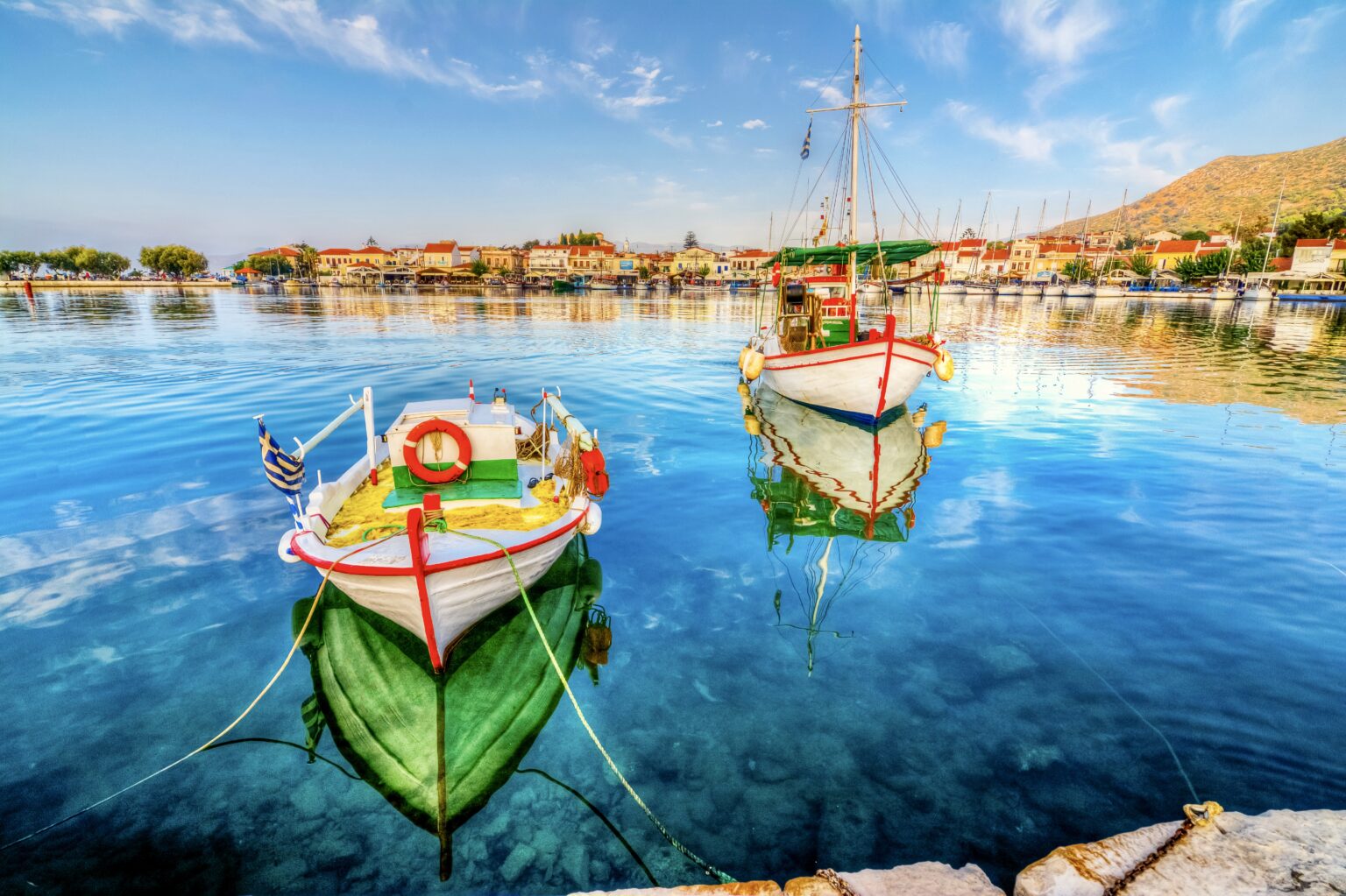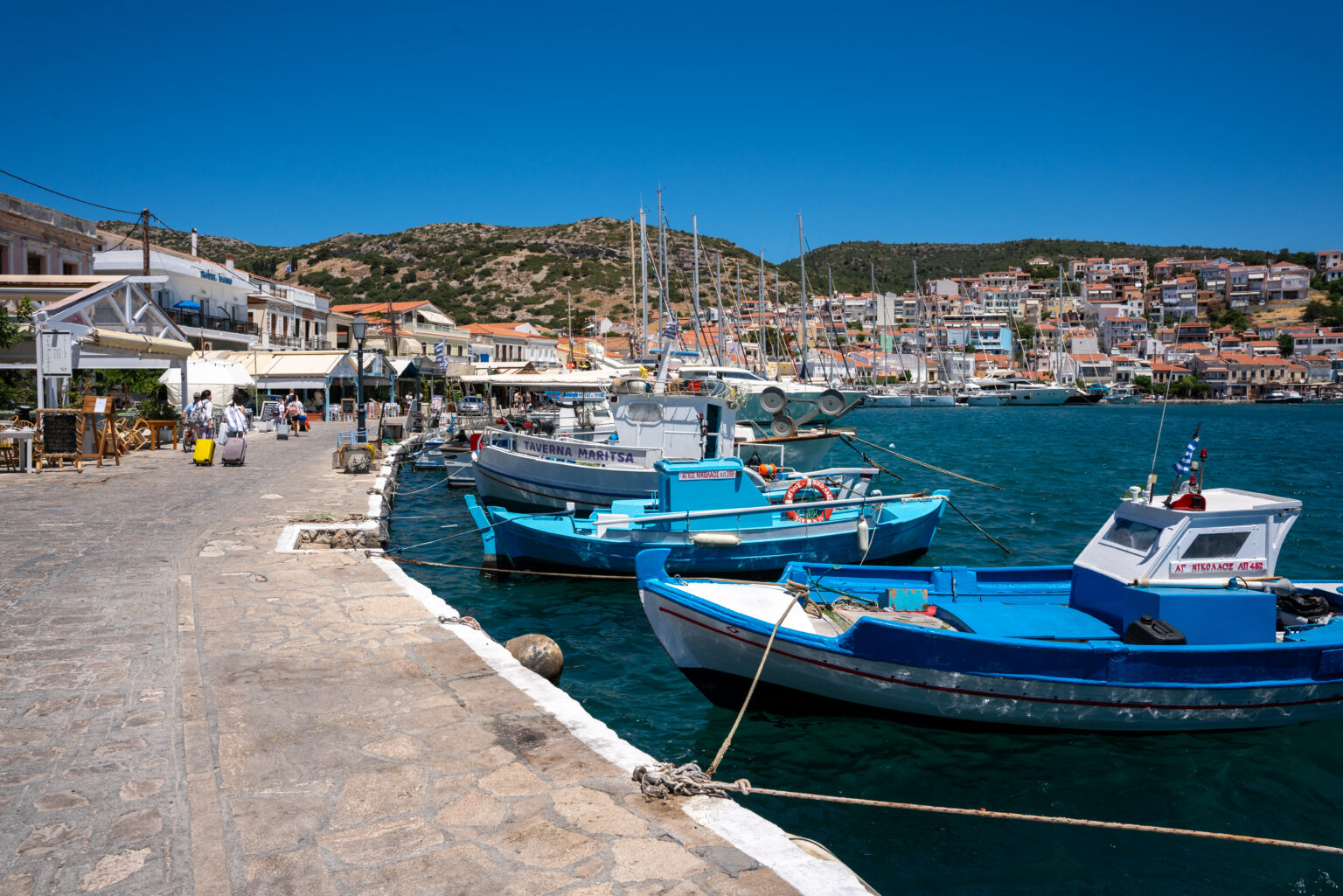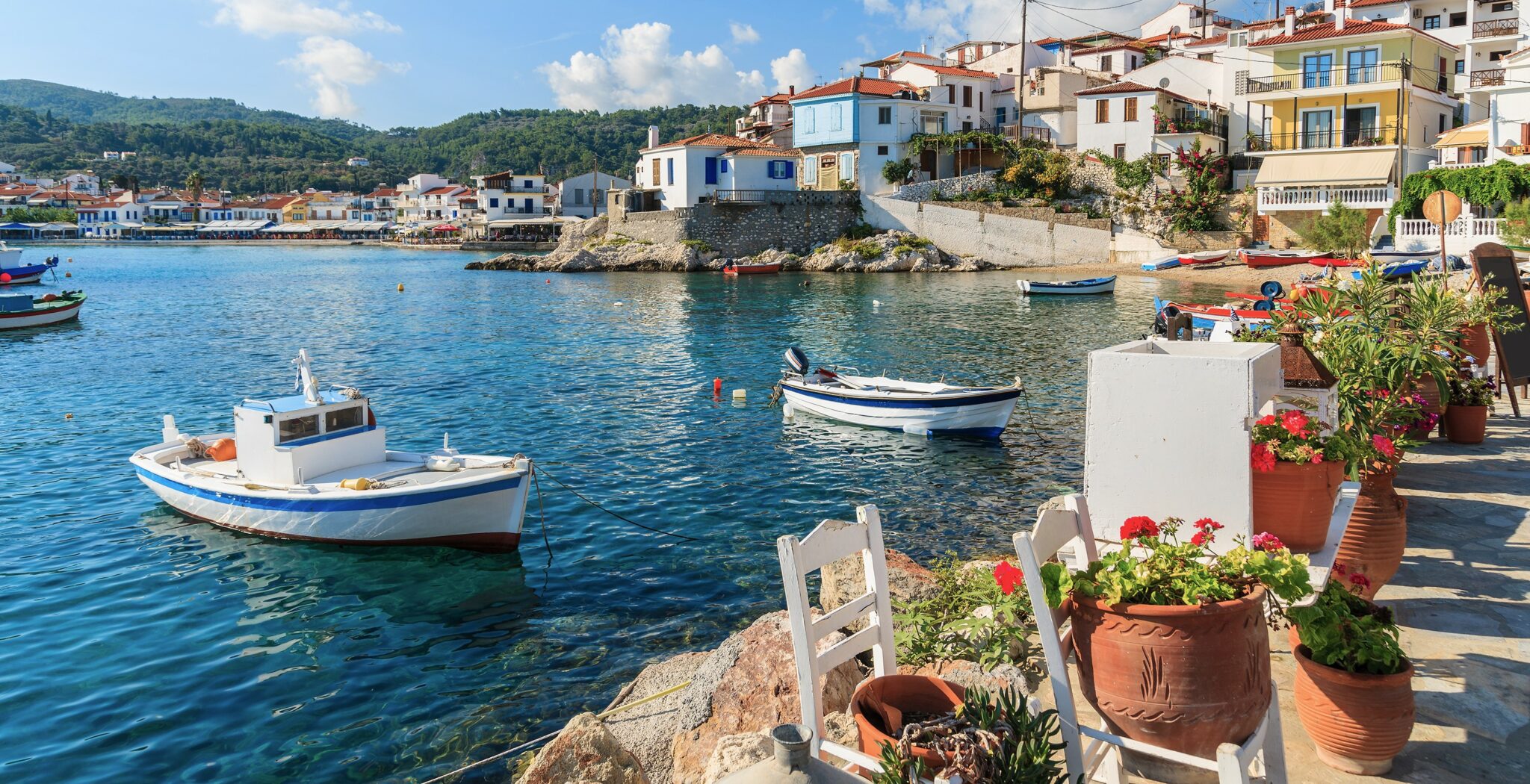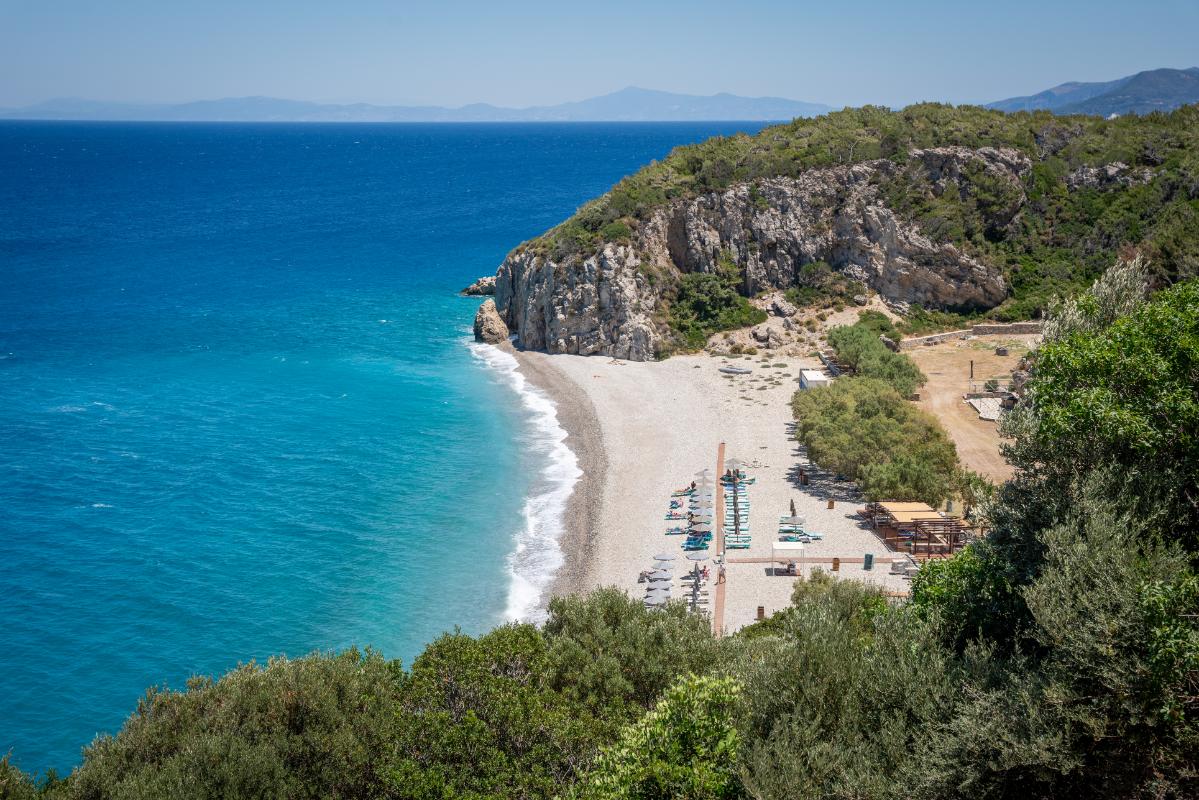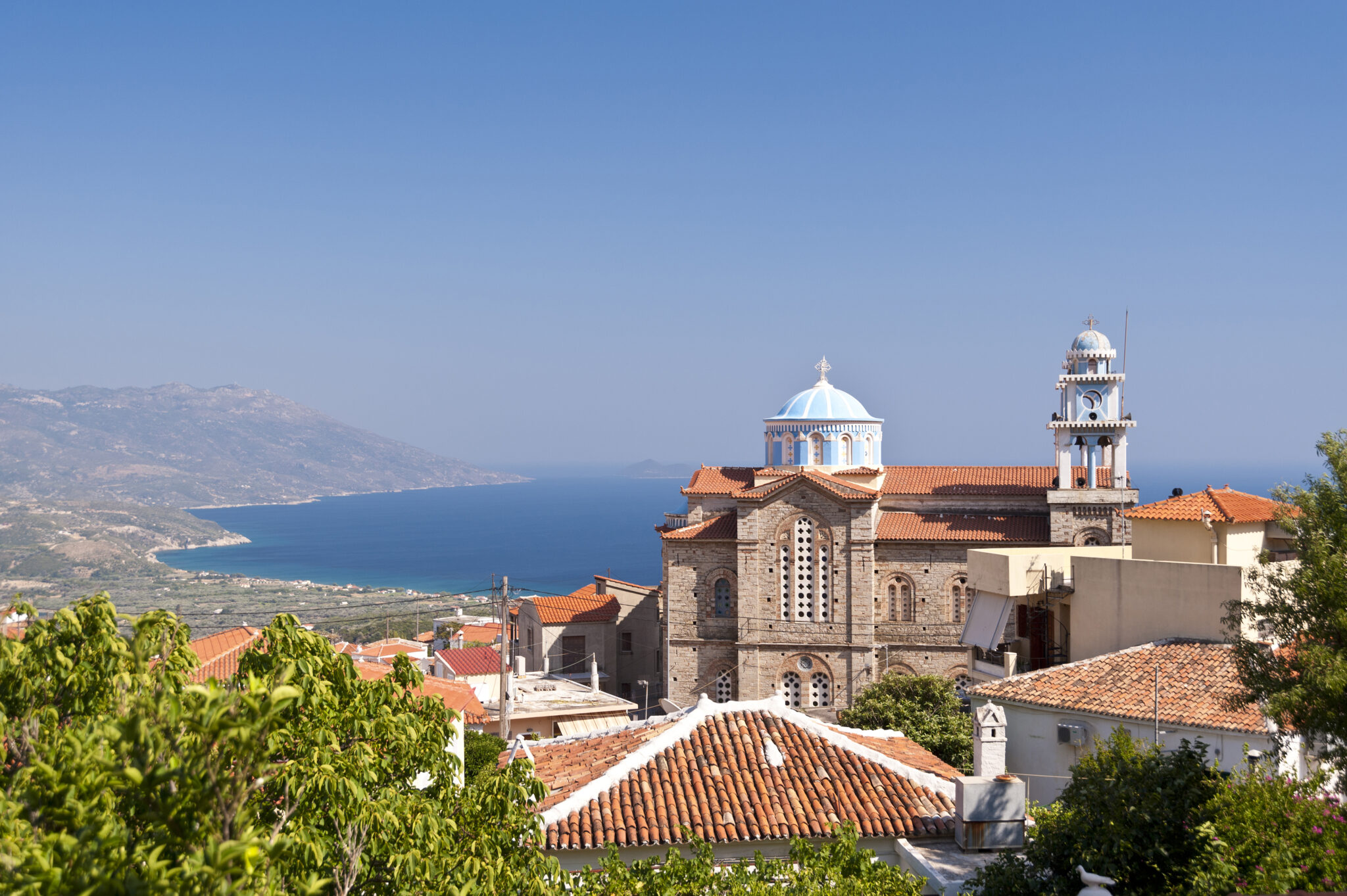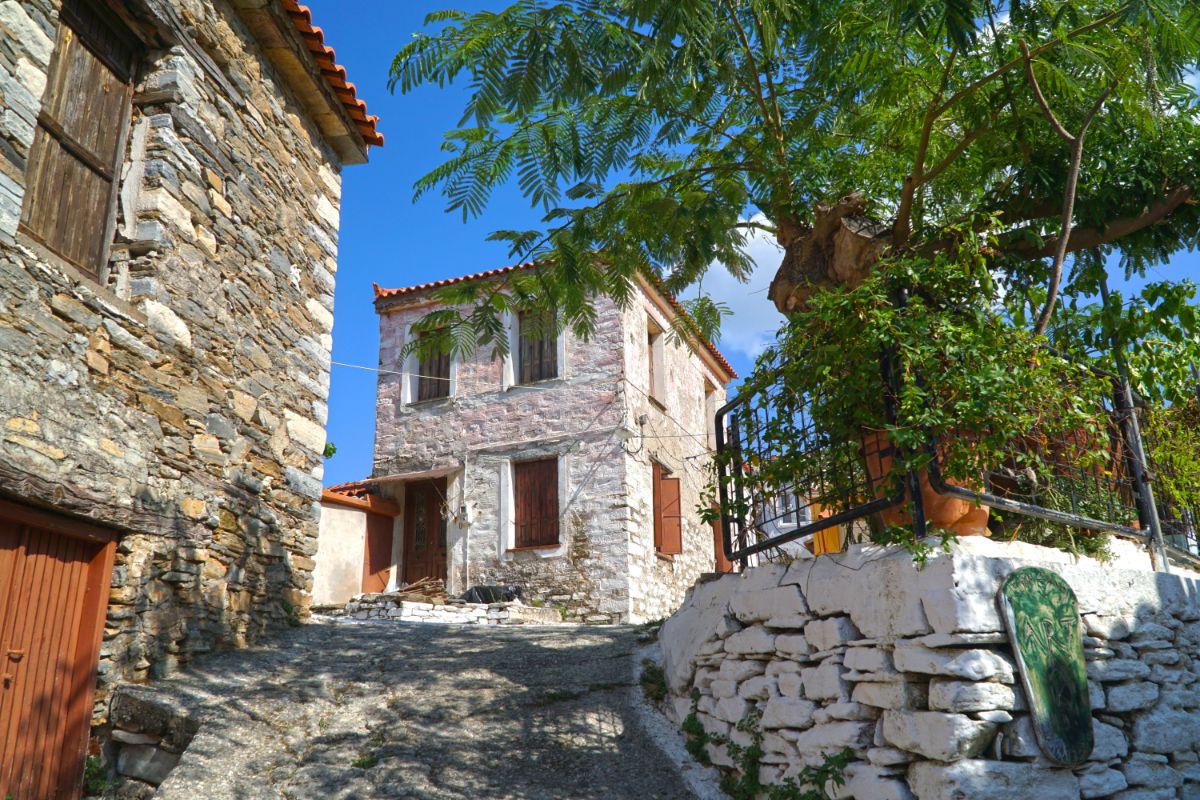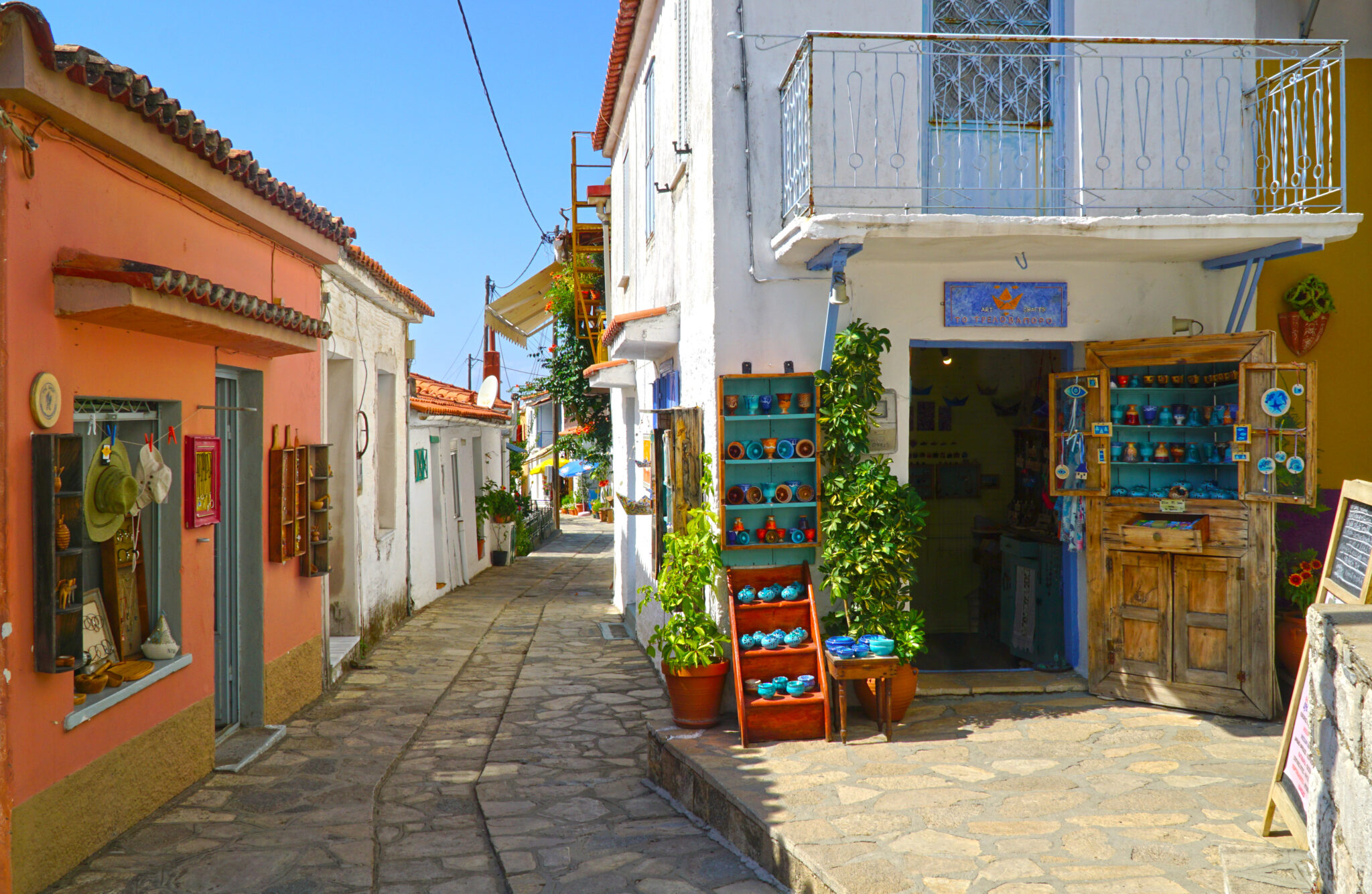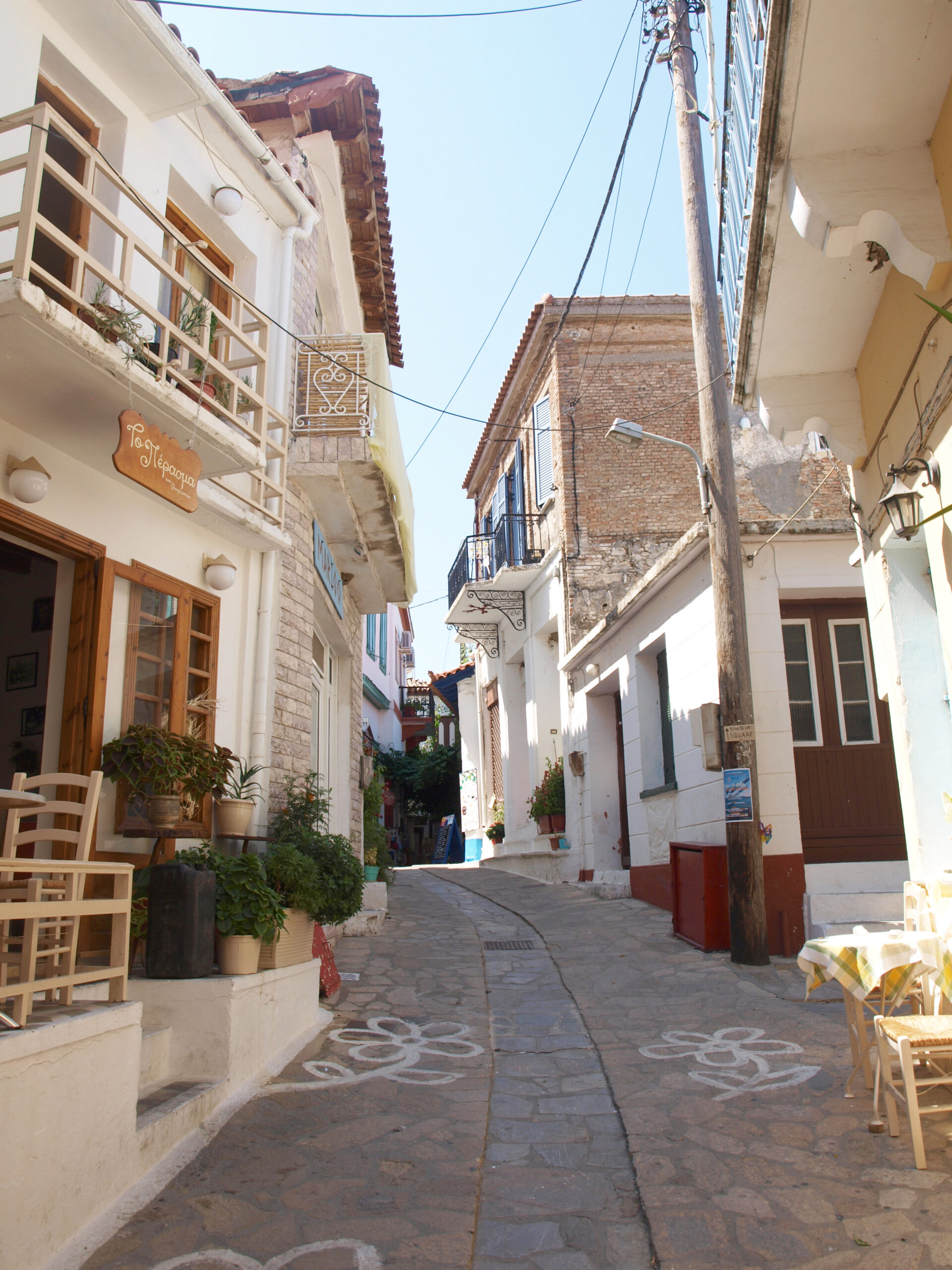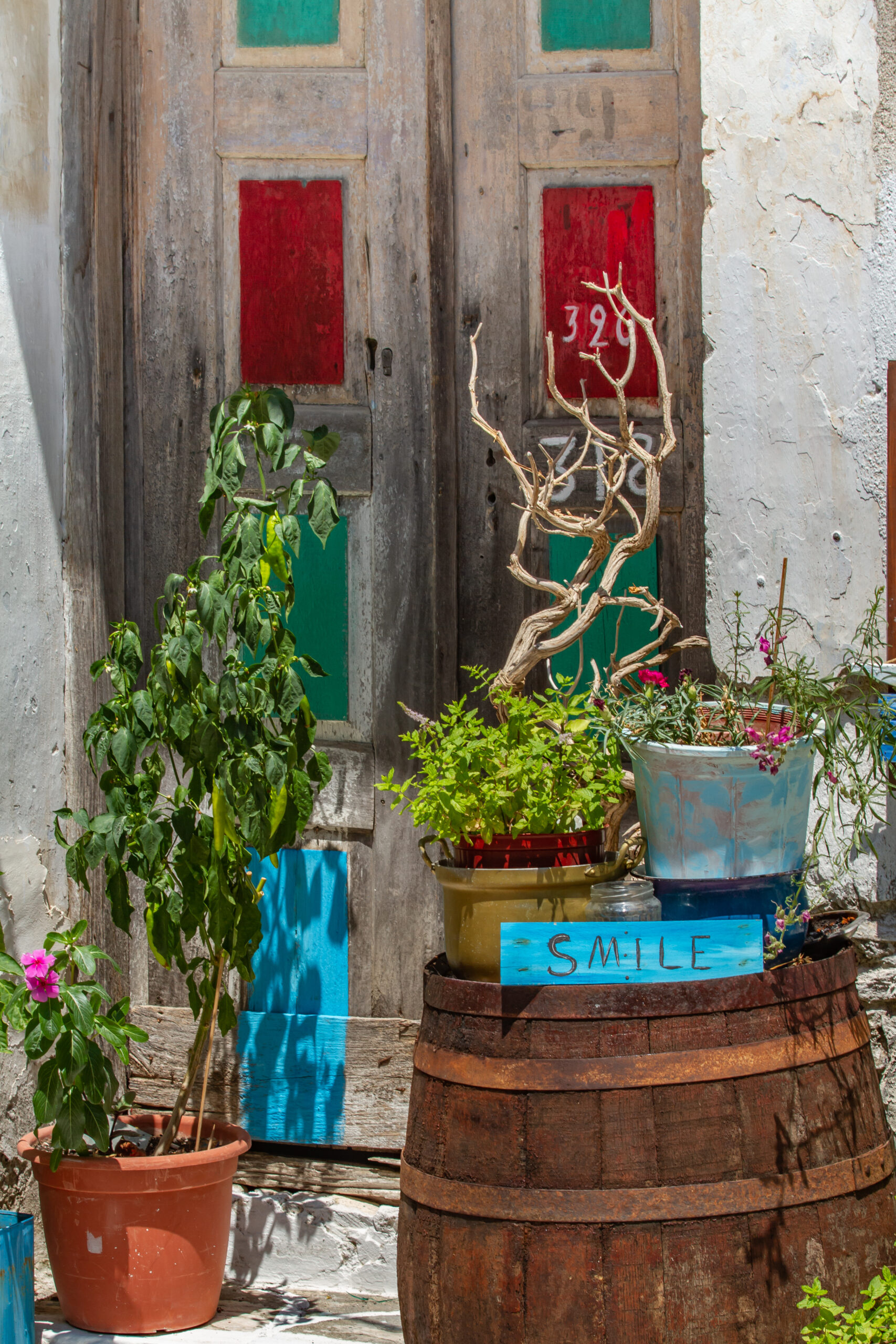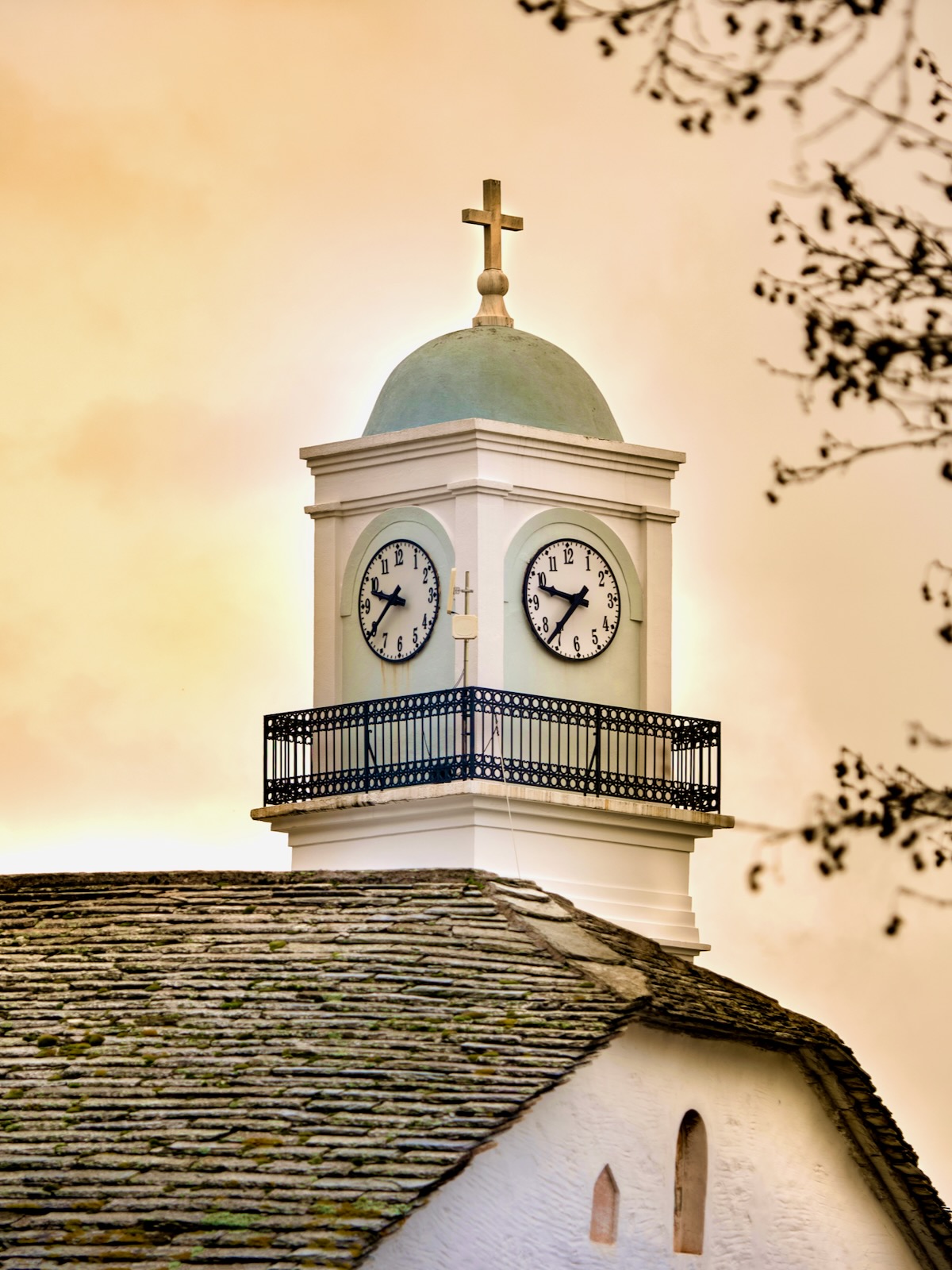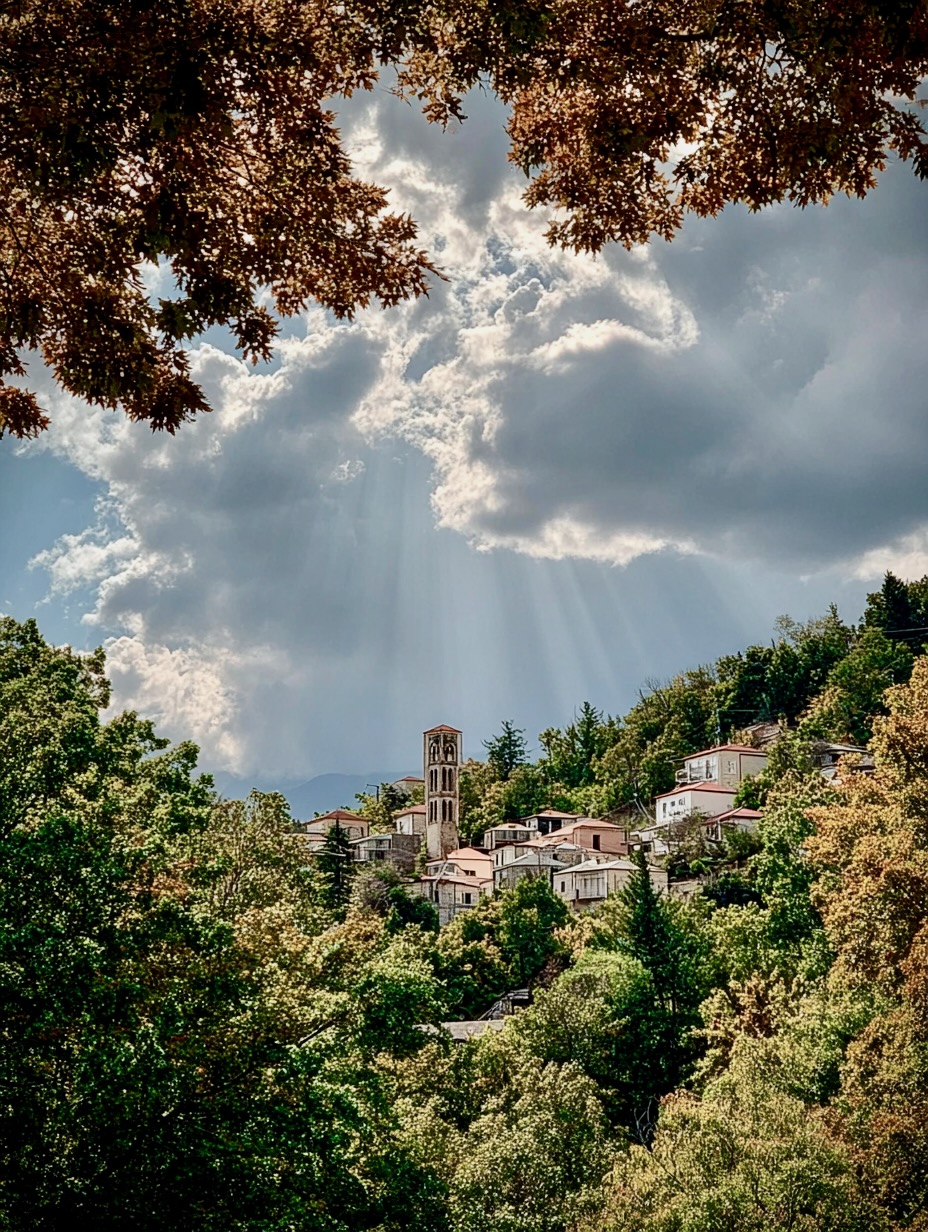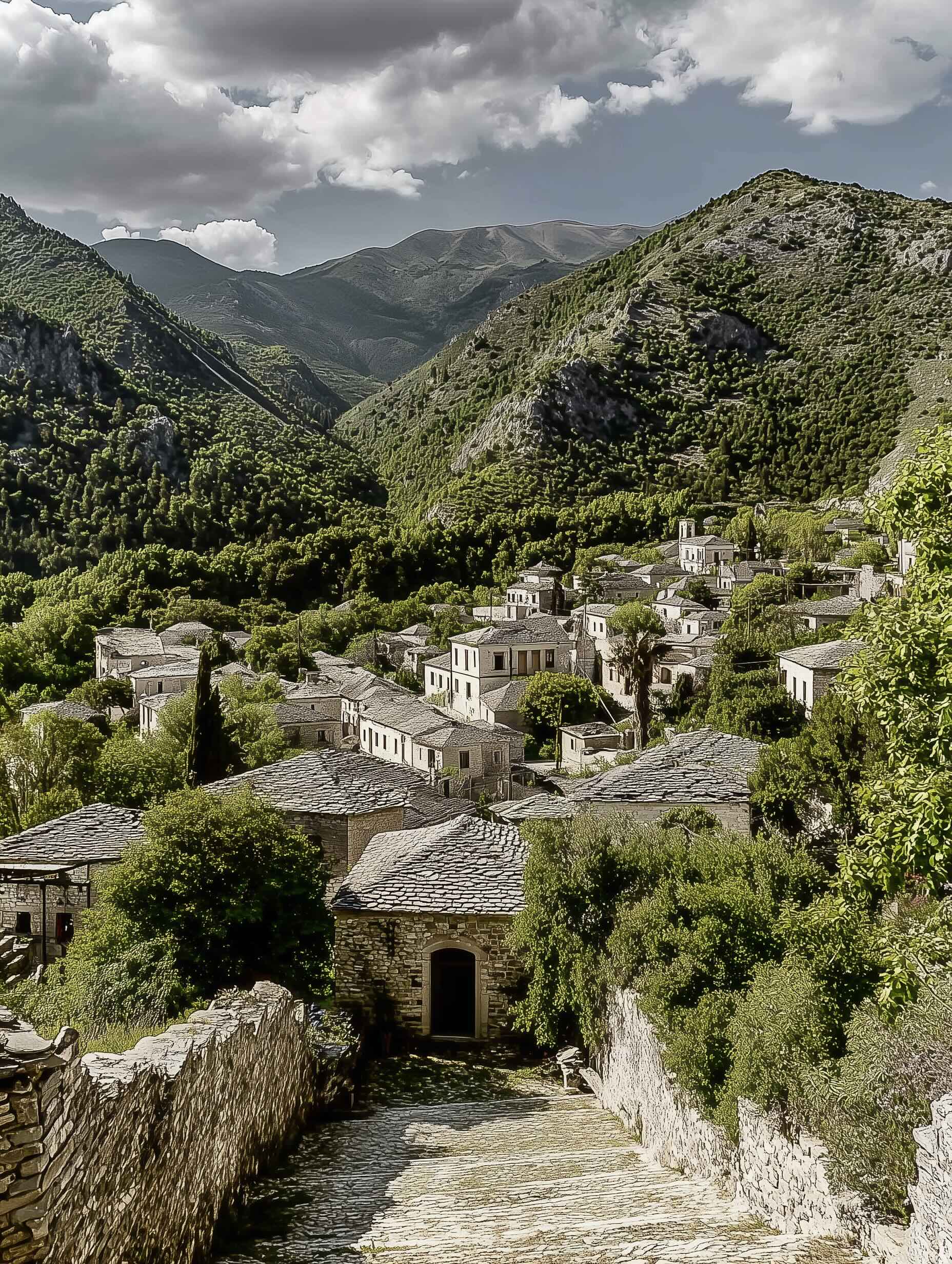Beyond everything else, scenic Samos captivates its visitors with its seaside and mountainous treasures, which, despite tourism development, have managed to preserve their charm over time. We guide you to five small and large villages, some by the sea with modern tourist facilities catering to every need, others tucked away on lush green slopes, all ideal destinations for those seeking tranquility and relaxation. Pythagoreio, Kokkari, and Marathokampos, known for their vibrant atmosphere and lively clubbing scenes on beautiful beaches with cool, clear waters. Additionally, we feature the traditional mountain villages of Manolates and Vourliotes, with their narrow cobblestone streets, quaint squares, and stunning views of the Turkish coast and nearby islands such as Fournoi, Ikaria, and Patmos.
01
Pithagorio
A historical and picturesque destination on the island’s southeastern coast, Pithagorio is renowned for its ancient heritage and a charming ambiance. It is named after the famous ancient mathematician and philosopher Pythagoras, the founder of Greek mathematics, who was born on the island in the 6th century BCE. Pithagorio is abundant in archaeological treasures that shine out the island’s significant historical standing. Among the most impressive sites here is the Heraion, a temple near the town dedicated to the goddess Hera. Another celebrated monument is the iuncredible Eupalinian Aqueduct, an approximately 1,036-meter-long aqueduct constructed in the 6th century BCE by the engineer Eupalinos, considered one of the greatest technological marvels of antiquity.
The harbor of Pithagorio is another significant landmark, as it was one of the first artificial harbors in the Mediterranean. Today, the area hosts numerous cafes, tavernas, and shops that offer high-quality services to visitors. Pithagorio is recognized by UNESCO as a World Heritage Site, something that has bolstered its historical and cultural value significantly. The area maintains its traditional character. Narrow streets, white houses, and colorful gardens, as well as plenty of natural beauty, are complemented by clean beaches and crystal-clear waters.
02
Kokkari
Located 10 kilometers from Vathy, Kokkari is one of the island’s most popular resorts, lying in the northeastern part of the island. With well-preserved old houses, a small harbor and a beautiful beach, it is one of the largest villages and one of the few with a growing population, as shown in the latest census.
At the village center stands the church of Agios Nikolaos, a three-aisled basilica with a dome, the largest of its kind on the island. The church’s gallery hosts an Ecclesiastical and Folklore Museum.
Kokkari’s organized beach has gleaming white pebbles and crystal-clear deep waters, and every summer attracts water sports enthusiasts (it even has a windsurfing school) who love its northerly winds and large waves. In the early 19th century, Kokkari was the harbour of the Mytilinioi mountain village, and over time it became a focal point in the coastal area and a top tourist resort on the island. Near Kokkari are the popular beaches of Tsamadou, Lemonakia, and Tsabou.
Nearby you’ll find ruins of an early Christian settlement that was abandoned in the 14th century due to pirate raids. Approximately two kilometers from the village, in Plaka, enormous ancient plane trees and plenteous clear waters create a scene of wild beauty. From Kokkari, many dirt roads lead to off-road adventures with 4×4 vehicles, as well as organized hiking trails.
03
Marathokampos
Marathokampos, along with its nearby harbor, Ormos, is one of the fastest-growing tourist centers in Samos, combining vast beaches, history, and a rich architectural heritage. The village is built on the slopes of Mount Fterias at an altitude of 270 meters, with beautiful panoramic sea views that extend to the neighboring islands of Fournoi and Patmos. It is one of the largest villages on Samos, located 44 kilometers from Vathy.
The village stands out chiefly for its beautiful traditional architecture, with single and two-story buildings built close together, with a labyrinth of narrow, winding streets between them. Terraces with eaves and arches over cobblestone alleys intertwine with stone-built, tiled-roof houses. The public school, or “Kentreios School” (1920), constructed with local stone and porcelain as the binding material, and the elaborate public fountain “Loungas” (1881) are some of the village’s treasures that the locals are particularly proud of.
At the center of the village is the church of Agios Athanasios (1795), with its northern aisle dedicated to Agia Varvara. The village is surrounded by thick olive groves, and produces excellent local olive oil and high-quality soap. Ormos, located four kilometers south, is one of the most popular destinations on the island. Its organized beach is covered with white pebbles and patches of fine sand.
04
Manolates
Manolates is distinguished by its unique traditional architecture, colorful houses, narrow streets, natural landscape, sea views, and ceramic workshops. The village is 22 kilometers from Vathy, with the last four kilometers winding up the green slopes of Mt Karvouni or Ampelos, with ancient plane trees and flowing waters. The single and two-story houses in vibrant colors are characteristic examples of local architecture. Small, paved squares immersed in greenery and flowers host charming cafes for relaxing over a coffee or dessert (such as orange pie) and small tavernas that satisfy every gastronomic demand.
The village looks like something out of a fairy tale. Its picturesque alleys lead to the village’s upper neighborhoods, from where one can look out to singular views across the sea and the Turkish coast opposite. From here, organized routes lead to the mountainous northern side of the island. Manolates is also home to many ceramic workshops, producing unique handmade decorative and utilitarian items made in traditional or modern styles. At the center stands an impressive covered marble fountain and a restored traditional house, which operates as a folklore museum, giving visitors a glimpse into the daily life of a bygone era.
05
Vourliotes
Vourliotes’ inhabitants originated from Vourla in Smyrna, which is why many houses are built in the Asia Minor architectural style. The first Vourliotes locals arrived on the island in the 17th century, making it their new home. Built on the slopes of Mount Ampelos, at an altitude of 340 meters, the village is 19 kilometers from the town of Samos.
Today, the majority of its residents are engaged in viticulture, on the traditional stone-built terraces scattered on its mountain slopes, producing wine that “gladdens the heart of man.” Nonetheless, the picturesque village is a popular destination for anyone seeking moments of tranquility and relaxation away from the hustle and bustle. The quaint houses, with their colorful doors and windows and whitewashed courtyards, are built close together, with narrow streets leading to the neighborhoods.
Many claim that the village square is one of the most beautiful on the island, as it is surrounded by colorful houses filled with fragrant flowers. Approximately two kilometers southeast you’ll find the Monastery of Vronta, the oldest and one of the most beautiful on the island, while the dirt road continues to the summit of Mt Ampelos and other small villages, through beautiful off-road routes. If you visit here, make sure to visit the nearby “Pnakas” spring, a lush area with abundant shade from plane trees and cool water.
Read also:
Exploring Pythagorio, Built Atop the Ancient City of Samos
Striking Beaches on the North Aegean Island of Samos
Flavours of Samos: From Traditional Tavernas to Modern Gourmet Restaurants



